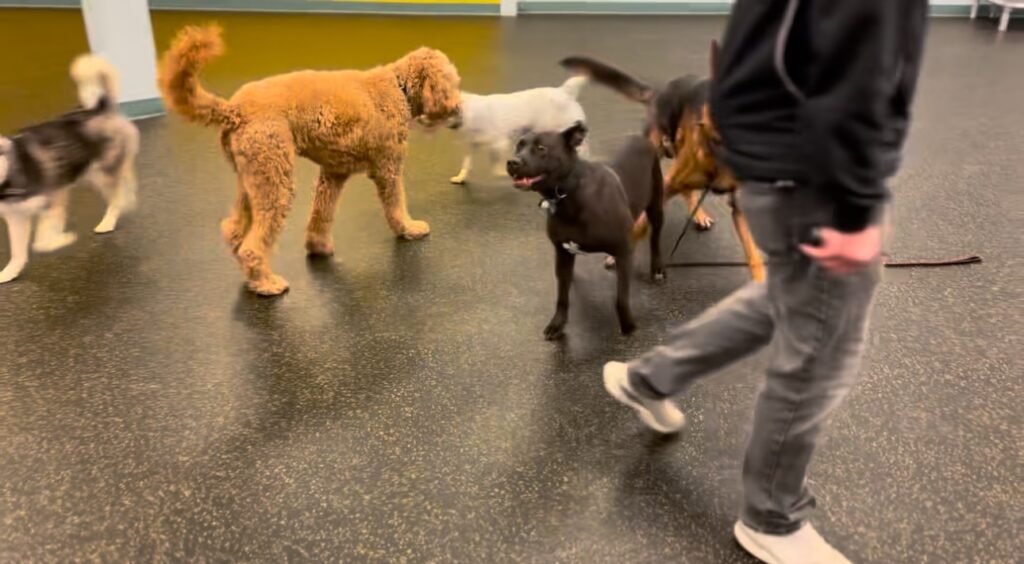Early socialization plays a critical role in shaping a puppy’s temperament, confidence, and ability to interact with the world around them. The prime socialization window occurs between 3 and 14 weeks of age, during which puppies are most receptive to new experiences and form lasting associations (Scott & Fuller, 1965). Exposure to a variety of people, animals, environments, sounds, and handling techniques during this period significantly reduces the risk of fear-based behaviors and aggression in adulthood (Serpell & Duffy, 2014). According to the American Veterinary Medical Association (2024), properly socialized puppies are more likely to grow into well-adjusted adult dogs with fewer behavioral issues.
Puppy development is divided into key stages that impact their social growth. The neonatal period (birth to 2 weeks) is primarily focused on survival, while the transitional period (2 to 3 weeks) marks the beginning of sensory development. The most influential phase is the socialization period (3 to 14 weeks), where exposure to various stimuli is essential for behavioral stability (Freedman, King, & Elliot, 1961). Critical experiences during this stage include interaction with different flooring textures, exposure to household noises, introduction to novel objects, and positive experiences with handling by various people. The University of California, Davis School of Veterinary Medicine (2024) notes that puppies who receive diverse and controlled exposure during this window are more adaptable and less prone to anxiety-related behaviors later in life.
To ensure safe and effective socialization, gradual and controlled exposure is key. Puppies should be introduced to new experiences in a way that fosters positive associations rather than overwhelming them. For example, allowing a puppy to explore new environments at their own pace, rewarding them with treats and praise for confident interactions, and providing structured playtime with other well-socialized dogs can enhance their adaptability (Hiby, Rooney, & Bradshaw, 2004). Gradual introductions to other animals, such as cats, help prevent conflict and establish positive interspecies relationships (Casey et al., 2021). Additionally, enrolling in a well-structured puppy socialization class provides an opportunity for controlled, supervised exposure to new experiences, reinforcing good behavior and confidence-building skills (VCA Animal Hospitals, 2024). Proper socialization during this early stage lays the foundation for a lifetime of positive interactions and emotional resilience in dogs.
References
- American Veterinary Medical Association. (2024). Puppy socialization and behavioral health. Retrieved from AVMA website.
- Casey, R. A., Loftus, B., Bolster, C., Richards, G. J., & Blackwell, E. J. (2021). Inter-dog and interspecies socialization in puppies: A review of best practices. Journal of Veterinary Behavior, 44, 77-84.
- Freedman, D. G., King, J. A., & Elliot, O. (1961). Critical periods in the social development of dogs. Science, 133(3457), 1016-1017.
- Hiby, E. F., Rooney, N. J., & Bradshaw, J. W. (2004). Dog training methods: Their use, effectiveness, and interaction with behavior and welfare. Animal Welfare, 13(1), 63-69.
- Scott, J. P., & Fuller, J. L. (1965). Genetics and the social behavior of the dog. University of Chicago Press.
- Serpell, J. A., & Duffy, D. L. (2014). Dog socialization and behavioral health: Understanding early-life influences. Applied Animal Behaviour Science, 159, 1-7.
- University of California, Davis School of Veterinary Medicine. (2024). The importance of early socialization in puppies. Retrieved from UC Davis website.
- VCA Animal Hospitals. (2024). Puppy behavior and training: Socialization and fear prevention. Retrieved from VCA web






